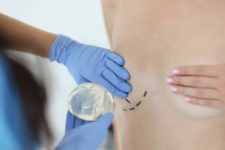
Life After Breast Implant Removal: 6 Things To Expect
While breast augmentation continues to be among the most sought-after cosmetic procedures each year, breast implant removal is also getting almost equal attention. In 2021 alone, about 219,000 women in the U.S. had their breast implants removed, and about 47% of them chose not to have a replacement.
Deciding to have your breast implants taken out is a very personal decision. You may be experiencing complications like implant illness or dissatisfaction with the results. Or you may simply be ready for removal after many years. Whatever your reasons, it’s normal to feel both eagerness and some anxiety about the procedure. It’s also common to have questions and uncertainties, such as how your life will change after the procedure.
But fear not; with realistic expectations and self-care during healing, most women feel uplifted and empowered entering this new chapter after explant surgery. Moreover, this article will walk through everything you need to know about the things to expect after breast implant removal. Read on.
The breast implant removal procedure itself is actually way simpler than getting your implants put in. It usually only takes about 1-2 hours from start to finish. Your surgeon will make a small incision, either around the lower half of the areola or underneath the breast crease, to access the implant. They’ll gently break down the scar tissue capsule that naturally formed around it, slide the implant out, wash out any stray silicone, and close everything up with some stitches.
Since it’s done under general anesthesia, you’ll be totally asleep and shouldn’t feel any discomfort during the surgery. Most women can go home the same day once they recover from the anesthesia and are able to eat and use the bathroom normally again. Just be sure to follow your doctor’s pre-op instructions for fasting and stopping medications beforehand.
Getting your implants removed is still surgery, so you’ll need to give your body ample time to heal up afterwards. The first couple of days are usually the sorest, so your surgeon will prescribe medications to help manage discomfort during this time.
Wearing a soft surgical bra 24/7 and avoiding any strenuous activity can also help reduce swelling and pain during the first week after surgery. Take it easy, and don’t rush back into your normal routine too quickly.
By 3-5 days post-op, most patients feel well enough to return to lighter activities like walking, working from home, etc. But don’t hit the gym just yet! Give yourself at least three full weeks before resuming more normal levels of activity to prevent reopening those healing wounds.
-
The visible changes to your breasts
Once those implants are out, your breasts will look quite different, which can be a dramatic change for most women! Without the added volume, your breasts will sit lower and be smaller and softer naturally.
How much they change depends on factors like your age, pregnancy, and weight fluctuations over the years. The more stretched your skin was from implants, the more looseness or ‘deflation’ you might notice. But don’t freak – about 63% of explant patients report being satisfied with the final appearance of their breasts after they fully heal up.
Immediately after surgery, your breasts may look wrinkled from being compressed inside the implant pocket for so long. This tends to improve over the first few months as the skin adjusts and re-drapes. Massaging and moisturizing the skin can help smooth things out.
Even if you’re totally happy to get your implants out, the emotional rollercoaster afterwards is real! Seeing your new breast shape for the first time can definitely be shocking. So, give yourself – and your body – plenty of grace during recovery. Take it easy and focus on rest. Hold off harshly judging your new boobs until the swelling has gone down completely and you have fully healed.
It also helps to connect with other women who’ve been through explant surgery via online groups. Moreover, remind yourself this is just a period of adjustment as you transition into your new, implant-free life.
The incisions from your implant removal will definitely leave a scar at first. Don’t worry, though – in about 6-12 months, the scarring fades significantly in most cases. Initially, those scars will likely be pink, thick, and raised. You can use any ointments or tape recommended by your breast surgeon to keep them hydrated and protected. Furthermore, avoid direct sun exposure as it can darken scarring.
After a few months, you can try silicone scar sheets or gels to flatten and smooth them out. If you’re worried about noticeable scarring, your doctor can also discuss options like steroid injections to soften their appearance over time.
While unlikely, there are a few potential risks to be aware of before your explant surgery. These are:
- Bleeding: This is rare with an experienced surgeon, but don’t hesitate to report any abnormal bleeding after surgery.
- Infection: Follow your surgeon’s instructions closely to lower any risk of infection. Let them know if you have any suspicious signs like fever.
- Anesthesia issues: Reactions are not common, but it’s best to discuss your history thoroughly with your anesthesia provider.
While complications aren’t super likely, it’s smart to understand the possibilities when making this big decision.
Takeaway
Explant surgery is a big step – physically and emotionally. Now that you know what to expect, make sure to shower lots of tender, loving care for your body and mind afterwards. Lean on your support squad when you need a boost. Most importantly, understand that the period of adjustment is temporary, and soon, you’ll look back and realize just how liberating this new chapter feels.






